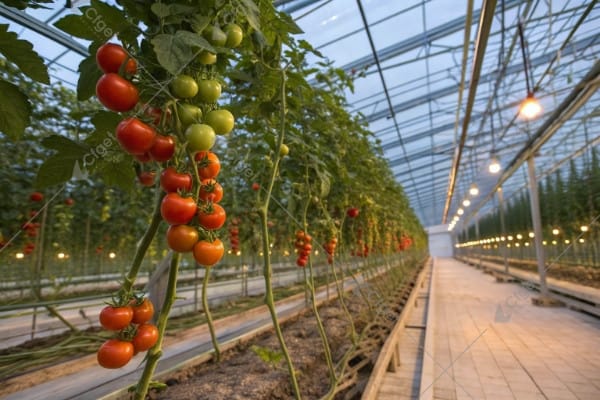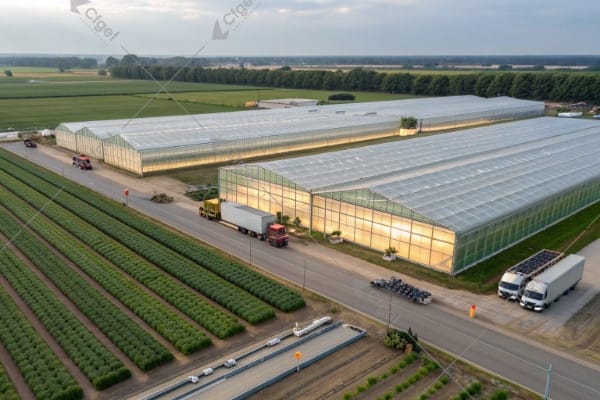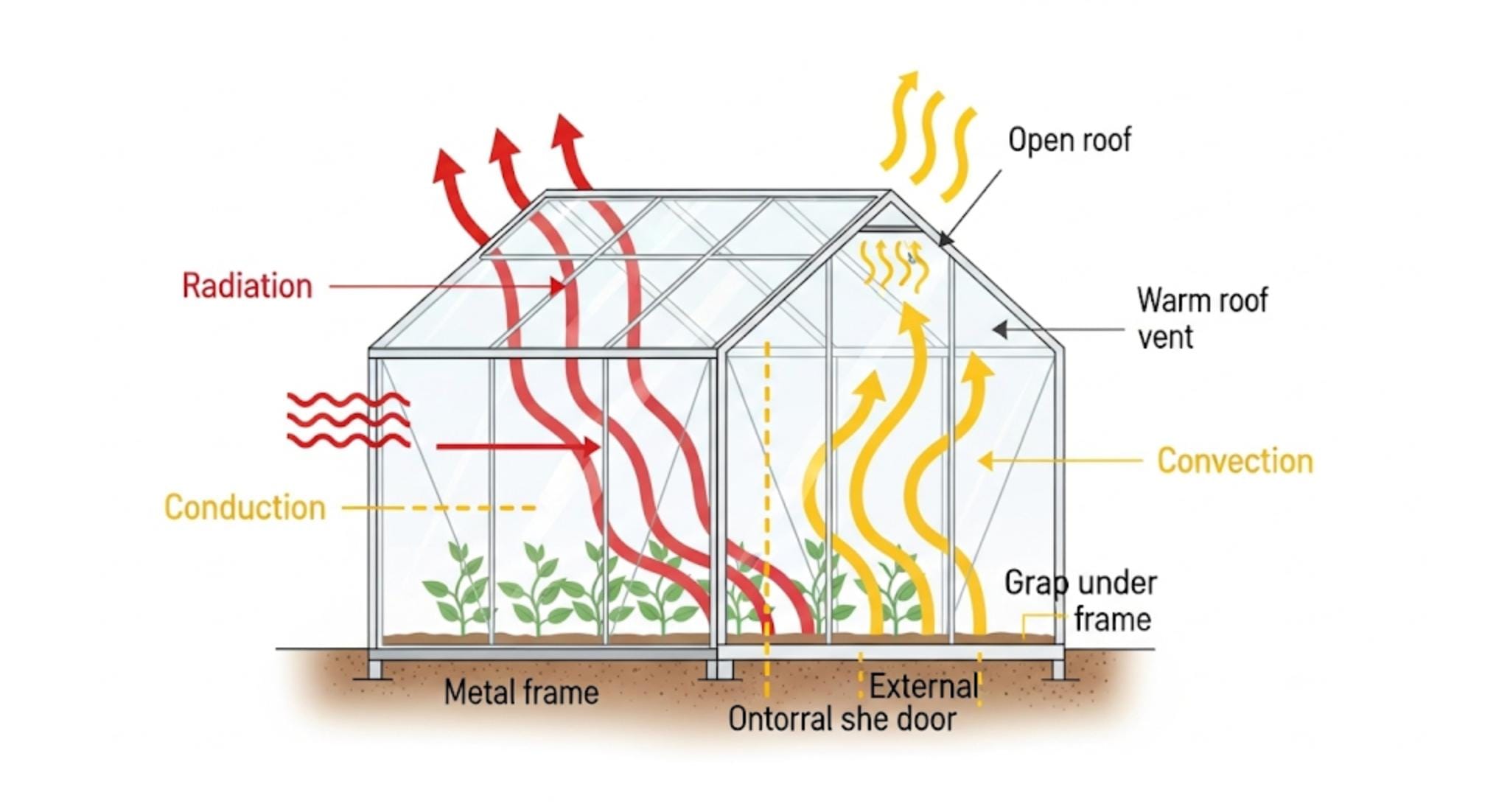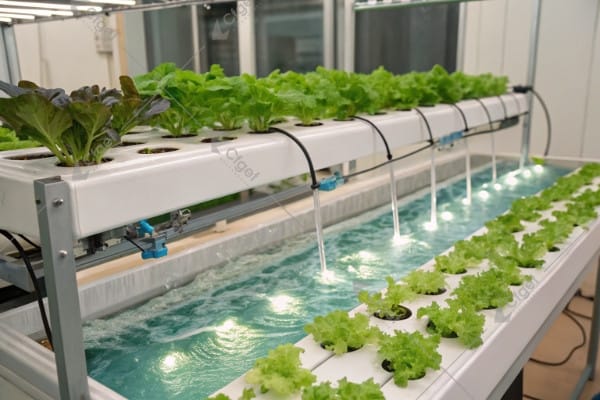Choosing the wrong greenhouse type can cost you hundreds of thousands. Most growers fail because they don’t understand structural options.
Commercial greenhouses include nursery, production, research, and livestock facilities. Structure types range from single-span to multi-span designs. Covering materials include poly film, glass, and polycarbonate. High-tech options feature smart controls and energy systems.
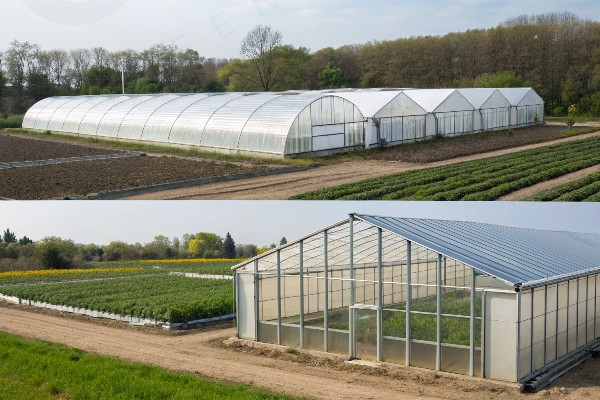
After 29 years at CFGET, I’ve designed over 1,000 commercial greenhouse projects across different climates and applications. Each project taught me that successful greenhouse selection depends on understanding your specific needs, local conditions, and long-term goals. The greenhouse industry has evolved dramatically since I started in 1996. Today’s options seem endless, but this complexity often overwhelms new growers.
The greenhouse you choose today will serve your operation for 15-25 years. I’ve seen too many growers make expensive mistakes by focusing only on initial costs or following trends without considering their unique requirements. In Thailand, I worked with a client who chose a glass greenhouse for tropical vegetable production. The cooling costs destroyed their profitability within two years. Another client in Kazakhstan selected a basic poly structure for year-round production. Winter heating costs exceeded their revenue.
Don’t Miss:——Commercial Hydroponic Greenhouse Systems: How Do Design, Construction, and ROI Interconnect?
You might like:——What is a Smart Greenhouse? The Ultimate Guide to Automated Growing
Commercial Greenhouses by Primary Use: From Nursery to Livestock?
Your greenhouse purpose determines structural requirements, but many growers choose general designs that waste money and limit operational efficiency.
Nursery greenhouses prioritize young plant protection with basic climate control. Production greenhouses maximize growing space and yields. Research facilities need precise environmental control. Livestock greenhouses focus on animal comfort and ventilation.
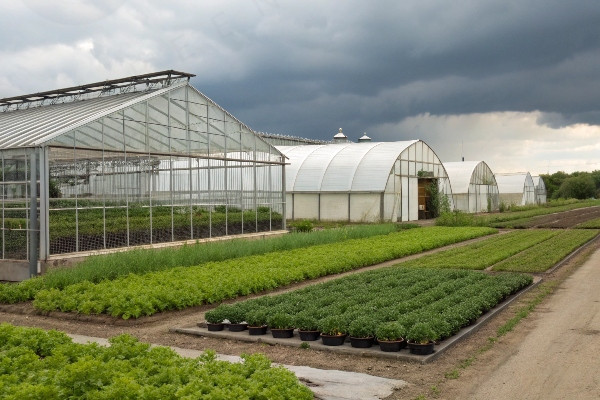
Understanding greenhouse applications guides every design decision from structure type to environmental systems. Each use category demands specific features that optimize performance and profitability. Generic greenhouse designs rarely excel in specialized applications, leading to operational compromises and reduced returns on investment.
Nursery greenhouses serve the plant propagation industry, focusing on seedling and young plant production. These facilities require excellent light transmission, uniform temperature distribution, and precise humidity control. Bench systems maximize space utilization while providing easy access for plant handling. Misting systems maintain optimal moisture levels for germination and early growth stages. Ventilation systems prevent disease issues common in high-humidity propagation environments.
Production greenhouses represent the largest commercial segment, designed for full-cycle crop cultivation. These structures prioritize growing space efficiency, environmental control capabilities, and harvest accessibility. Height requirements vary by crop type – leafy greens need 8-12 feet while indeterminate tomatoes require 15-20 feet minimum. Production greenhouses often incorporate specialized systems like hydroponic growing, climate computers, and automated irrigation.
Primary Use Categories and Requirements
| Use Category | Key Features | Typical Crops |
|---|---|---|
| Nursery | Propagation benches, misting systems | Seedlings, cuttings |
| Production | Maximum growing space, crop support | Vegetables, flowers |
| Research | Precise controls, data collection | Experimental crops |
| Retail | Display areas, customer access | Finished plants |
| Livestock | Ventilation, animal comfort | Poultry, aquaculture |
Research greenhouses demand the highest level of environmental precision. These facilities support agricultural research, plant breeding programs, and educational institutions. Multiple growing zones with independent climate control allow simultaneous experiments under different conditions. Data collection systems monitor and record environmental parameters continuously. Research greenhouses often feature specialized equipment like growth chambers, controlled pollination areas, and quarantine sections.
Retail greenhouses combine growing and display functions for garden centers and plant retailers. These structures require attractive appearance, customer accessibility, and flexible display systems. Wide aisles accommodate shopping carts and customer traffic. Natural lighting creates an appealing shopping environment while supporting plant health. Retail greenhouses often feature entrances, checkout areas, and storage sections integrated into the design.
Livestock greenhouses serve specialized animal agriculture applications. Poultry operations use greenhouse structures for free-range housing, combining weather protection with natural lighting. Aquaculture greenhouses maintain optimal conditions for fish farming or hydroponic fish systems. These applications require robust ventilation systems, specialized flooring, and utility connections for feeding and waste management systems.
Structural Features of Commercial Greenhouses: Single-Span, Multi-Span, and Special Designs Explained?
Structural design impacts everything from construction costs to operational efficiency, yet most growers focus only on initial price comparisons.
Single-span greenhouses offer simple construction and independent operation. Multi-span designs maximize space efficiency and reduce heating costs. Special designs include gothic arches, saw-tooth roofs, and tunnel structures for specific applications.
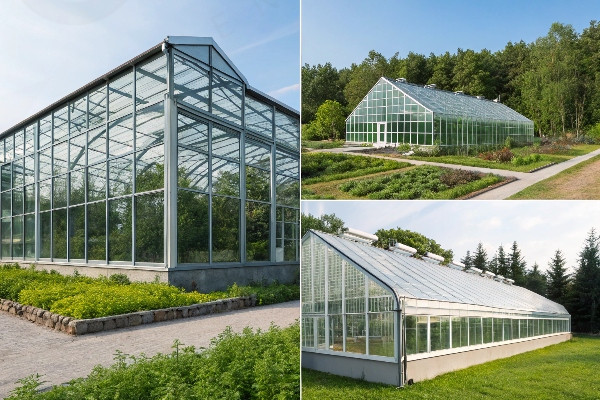
Structural design fundamentally determines greenhouse performance, durability, and operational characteristics. The framework supports covering materials, environmental systems, and crop loads while resisting wind and snow forces. Poor structural choices lead to maintenance problems, operational limitations, and premature replacement needs.
Single-span greenhouses feature individual roof sections supported by side walls. These structures offer design simplicity, construction flexibility, and operational independence. Each span operates as a separate growing environment, allowing different crops or climate settings within the same facility. Single-span designs excel in applications requiring operational flexibility or phased construction approaches.
The structural simplicity of single-span greenhouses reduces construction complexity and costs. Standard building techniques apply, making local construction possible in many regions. Maintenance access is excellent since each span can be serviced independently. However, single-span designs typically require more foundation work and structural materials per square foot of growing space.
Multi-span greenhouses connect multiple roof sections through common gutters and supports. This approach maximizes enclosed growing space while minimizing structural materials and foundation requirements. Connected spans share heating and cooling systems, reducing energy costs per square foot. Large multi-span facilities achieve economies of scale in both construction and operation.
Structural Design Comparison
| Structure Type | Advantages | Disadvantages |
|---|---|---|
| Single-Span | Simple construction, flexibility | Higher cost per sq ft |
| Multi-Span | Space efficiency, lower energy costs | Complex construction |
| Gothic Arch | Snow shedding, strength | Limited headroom at edges |
| Quonset | Low cost, easy construction | Poor ventilation |
| Sawtooth | Excellent natural light | Weather sealing challenges |
Our greenhouse structure
Gothic arch structures combine the benefits of peaked roofs with improved structural strength. The curved roof profile sheds snow effectively while providing excellent structural stability against wind loads. Gothic designs offer good interior height throughout the growing space, supporting tall crops and equipment access. These structures work particularly well in regions with significant snow loads or high wind exposure.
Tunnel greenhouses represent the most economical structural option for many applications. These simple curved structures use bent pipe or tubing frames covered with plastic film. Construction costs remain minimal, making tunnel houses attractive for seasonal production or entry-level operations. However, limited headroom, basic ventilation, and reduced durability restrict their application range.
Sawtooth greenhouses feature asymmetrical roof profiles designed to maximize natural lighting. North-facing roof sections remain nearly vertical while south-facing sections slope at optimal angles for light transmission. This design improves growing conditions for light-sensitive crops while providing excellent natural ventilation through roof vents. Sawtooth structures require careful engineering to prevent weather infiltration at roof transitions.
Special structural considerations apply to extreme climate conditions. High-wind regions require enhanced structural connections and wind-resistant profiles. Heavy snow areas need steep roof angles and reinforced framing. Seismic zones require flexible connections and base isolation systems. Our projects in Central Asia incorporate all these features to handle extreme temperature variations and severe weather conditions.
Greenhouse Covering Materials Compared: Pros and Cons of Poly Film, Glass, and Polycarbonate?
Covering material choice affects crop performance and operating costs for decades, but initial price often overshadows long-term performance considerations.
Polyethylene film offers low initial cost but requires replacement every 3-4 years. Glass provides excellent light transmission and durability lasting 20+ years. Polycarbonate combines good insulation with impact resistance and 10-15 year lifespan.
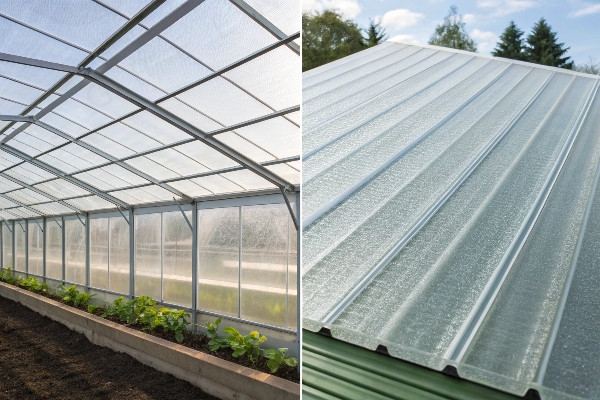
Covering material selection impacts every aspect of greenhouse performance from light transmission to energy efficiency. The covering creates the controlled environment boundary, influencing temperature stability, humidity control, and growing conditions. Material properties determine maintenance requirements, replacement schedules, and long-term operational costs.
Polyethylene film represents the most common greenhouse covering worldwide due to low initial costs and installation simplicity. Single-layer 6-mil poly film costs approximately $0.15-0.25 per square foot installed. Double-layer inflation systems improve insulation while maintaining reasonable costs at $0.30-0.45 per square foot. Modern agricultural films include UV stabilizers extending lifespan to 3-4 years under normal conditions.
Film greenhouses offer excellent light transmission when new, typically 85-90% for clear materials. Light transmission gradually decreases due to dirt accumulation, UV degradation, and material aging. Cleaning requirements are minimal since film replacement occurs regularly. However, film greenhouses provide limited insulation value, increasing heating and cooling costs compared to rigid coverings.
Glass greenhouses deliver superior performance and longevity but require higher initial investment. Tempered glass costs $3-5 per square foot installed, while standard horticultural glass ranges from $2-3 per square foot. Glass provides excellent light transmission (90-92%) that remains stable over decades. Thermal properties allow precise temperature control with minimal energy waste.
Covering Material Performance Comparison
| Material | Initial Cost | Lifespan | Light Transmission | Insulation |
|---|---|---|---|---|
| Single Poly | $0.15-0.25/sq ft | 3-4 years | 85-90% | Poor |
| Double Poly | $0.30-0.45/sq ft | 3-4 years | 80-85% | Fair |
| Glass | $2-5/sq ft | 20+ years | 90-92% | Good |
| Polycarbonate | $1.50-3/sq ft | 10-15 years | 80-85% | Excellent |
Polycarbonate panels combine many advantages of glass with improved impact resistance and insulation properties. Twin-wall polycarbonate costs $1.50-2.50 per square foot while triple-wall systems range from $2.50-3.50 per square foot. The cellular structure provides excellent thermal insulation, reducing heating costs by 30-50% compared to single-layer coverings.
Polycarbonate offers good light transmission (80-85%) with excellent light diffusion properties. The diffused light reduces plant stress and shadows while providing more uniform growing conditions. UV protection is built into quality polycarbonate panels, preventing material degradation and crop damage. However, light transmission gradually decreases over time due to surface weathering and dirt accumulation.
Don’t Miss:——Polycarbonate Greenhouses Explained: More Than Just Plastic?
Specialty covering materials serve specific applications and extreme conditions. ETFE (ethylene tetrafluoroethylene) film provides superior light transmission and chemical resistance but costs significantly more than conventional materials. Acrylic panels offer glass-like clarity with better impact resistance. Fiberglass panels provide good light diffusion and impact resistance but yellow with age.
Regional climate conditions heavily influence covering material selection. Hot climates benefit from materials with good thermal properties and UV resistance. Cold regions require maximum insulation value and snow load capacity. High-wind areas need impact-resistant materials and secure attachment systems. Our experience across diverse climates shows that material selection often matters more than structural design for operational success.
Overview of High-Tech Commercial Greenhouses: Smart, Light Deprivation, and Eco-Friendly?
Traditional greenhouses waste energy and labor while smart systems promise efficiency gains, but technology complexity often overwhelms smaller operations.
Smart greenhouses use sensors and automation for precise environmental control. Light deprivation systems manipulate photoperiods for controlled flowering. Eco-friendly designs integrate renewable energy, water recycling, and sustainable materials for reduced environmental impact.
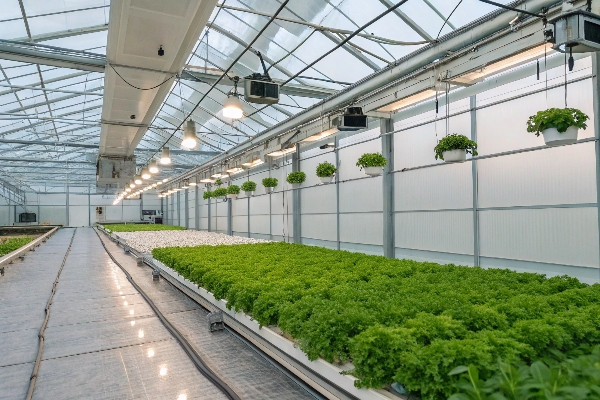
High-technology greenhouse systems represent the future of controlled environment agriculture, integrating advanced sensors, automation, and sustainable technologies. These systems optimize growing conditions while reducing labor requirements and resource consumption. However, technology adoption requires careful consideration of complexity, costs, and operational capabilities.
Smart greenhouse systems utilize networks of sensors to monitor environmental conditions continuously. Temperature, humidity, light levels, soil moisture, and CO2 concentrations are measured and recorded in real-time. Advanced climate computers process this data and automatically adjust heating, cooling, ventilation, and irrigation systems to maintain optimal growing conditions. Integration with weather forecasting allows predictive climate control, reducing energy consumption while maintaining crop performance.
The automation capabilities of smart greenhouses extend beyond basic environmental control. Nutrient dosing systems automatically adjust fertilizer concentrations based on plant growth stages and uptake rates. Irrigation systems deliver precise water amounts based on soil moisture sensors and weather predictions. Some systems incorporate machine learning algorithms that improve control strategies over time based on crop performance data.
Smart greenhouse technology offers significant labor savings through automation of routine tasks. Automated seeding, transplanting, and harvesting systems reduce manual labor requirements while improving consistency. However, these systems require skilled technicians for maintenance and calibration. The initial investment in smart greenhouse technology typically ranges from $50-150 per square foot above basic greenhouse costs.
High-Tech Greenhouse Categories
| Technology Type | Key Features | Benefits |
|---|---|---|
| Smart Control | Sensors, automation, data logging | Precision, labor savings |
| Light Deprivation | Blackout systems, photoperiod control | Year-round flowering |
| Renewable Energy | Solar panels, geothermal, wind | Reduced operating costs |
| Water Recycling | Condensate capture, treatment systems | Water conservation |
| LED Supplemental | Spectrum control, energy efficiency | Improved crop quality |
Light deprivation greenhouses incorporate automated blackout systems that control photoperiods for photoperiod-sensitive crops. These systems use motorized curtains or retractable covers to create artificial day/night cycles regardless of natural light conditions. Light dep technology enables multiple harvest cycles per year for crops like cannabis, chrysanthemums, and poinsettias that require specific day lengths for flowering.
The blackout systems must achieve complete light exclusion (less than 0.1 lux) during dark periods to trigger proper flowering responses. High-quality blackout materials and precise sealing systems ensure no light leaks compromise the photoperiod manipulation. Automated deployment systems maintain consistent timing while reducing labor requirements. Ventilation systems continue operating during blackout periods to prevent heat buildup and maintain air circulation.
Eco-friendly greenhouse designs prioritize sustainability through renewable energy integration, resource conservation, and environmental impact reduction. Solar panel systems can provide significant portions of greenhouse electricity needs, particularly for ventilation fans and automated systems. Geothermal heating and cooling systems utilize stable ground temperatures to reduce energy consumption. Wind power supplements renewable energy generation in suitable locations.
Water conservation technologies capture and recycle irrigation runoff, condensate from dehumidification systems, and rainwater collection. Advanced treatment systems purify recycled water for reuse, reducing overall water consumption by 50-80%. Nutrient recovery systems extract and reuse fertilizers from drainage water, reducing both costs and environmental impact.
Sustainable construction materials and practices reduce the environmental footprint of greenhouse construction. Recycled steel framing, sustainable wood alternatives, and low-impact concrete reduce embodied energy. Local material sourcing reduces transportation emissions while supporting regional economies. End-of-life planning ensures greenhouse materials can be recycled or repurposed when structures reach replacement age.
The integration of multiple high-tech systems creates synergistic benefits but increases complexity and initial costs. Successful high-tech greenhouse operations require comprehensive planning, skilled operators, and robust maintenance programs. However, the operational advantages often justify higher investments through improved efficiency, crop quality, and market positioning opportunities.
Conclusion
Your greenhouse choice determines 15-25 years of operational success. Match structure, materials, and technology to your crops, climate, and budget for optimal long-term profitability.

